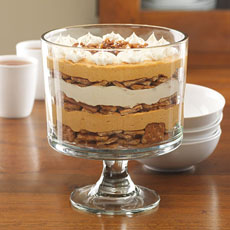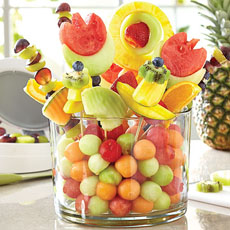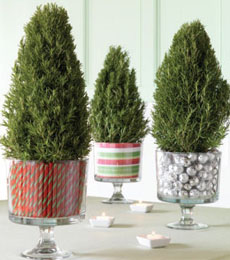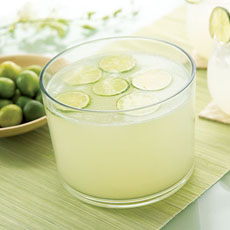TIP OF THE DAY: 10+ Uses For A Trifle Bowl
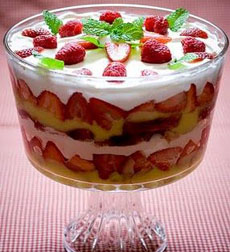
|
Trifles are one of the easiest desserts you can make—and impressive to present. Most of the ingredients are purchased ready-to-use, with only custard or other pudding requiring a few minutes of preparation. A trifle is a layered British dessert of fruit, sponge fingers or sponge cake soaked, custard, and a topping of whipped cream. Other ingredients can be added (gelatin/Jell-O, cookie crumbs) and the cake can be soaked in alcohol. Trifle is an evolution of a fruit fool, a dessert that probably originated in 15th -century Britain. Puréed stewed fruit was swirled with sweet custard. The classic was (and is) gooseberry fool, but seasonal fruits—apples, berries, rhubarb—were also used. Other countries have their own versions that followed the British concept. In Italy, for example, zuppa inglese, a layering of liqueur-soaked sponge and custard, appeared in the late 19th century. The first known reference to a trifle appears in 1585 in a cookbook, The Good Huswifes Jewell. It was flavored with sugar, ginger and rosewater (a recipe for the well-do-do, as sugar and spices were costly). The trifle evolved to include a layer of crumbled biscuits (cookies) and alcohol-soaked sponge cake or sponge fingers (ladyfingers) as the bottom layer. Brandy, madeira, port and sherry were used to soak the sponge. When powdered gelatin* became available in 1845, a layer of fruit “jelly” was added to recipes. As was so common among the fashionable in Renaissance Britain, France, and other European countries, new foods engendered new styles of dishes and flatware. For trifles, a straight-sided pedestal glass bowl showed off the beauty of the layers. Today, many people prefer bowls without the pedestal (easier to store), and modern ingredient layers that range from layers of chocolate cake, peanut butter pudding, pretzels and Oreos. Glass bowls with or without a pedestal are used for other desserts and can also be repurposed. Anyone who owns a straight-sided glass bowl has already figured out how to use it for layered dips, layered salads (fruit, green, pasta) and as a fruit bowl. It can serve as anything from a bread basket (nice with muffins at brunch) to a chip bowl. Here are more ways to use a trifle bowl. Thanks to Pampered Chef for some of these ideas and photos. |
|
|
OTHER USES FOR A TRIFLE BOWL
We look forward to your suggestions! |
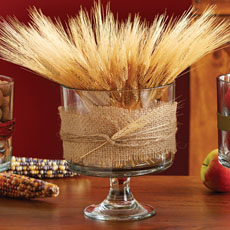
|
|
|
|
||
